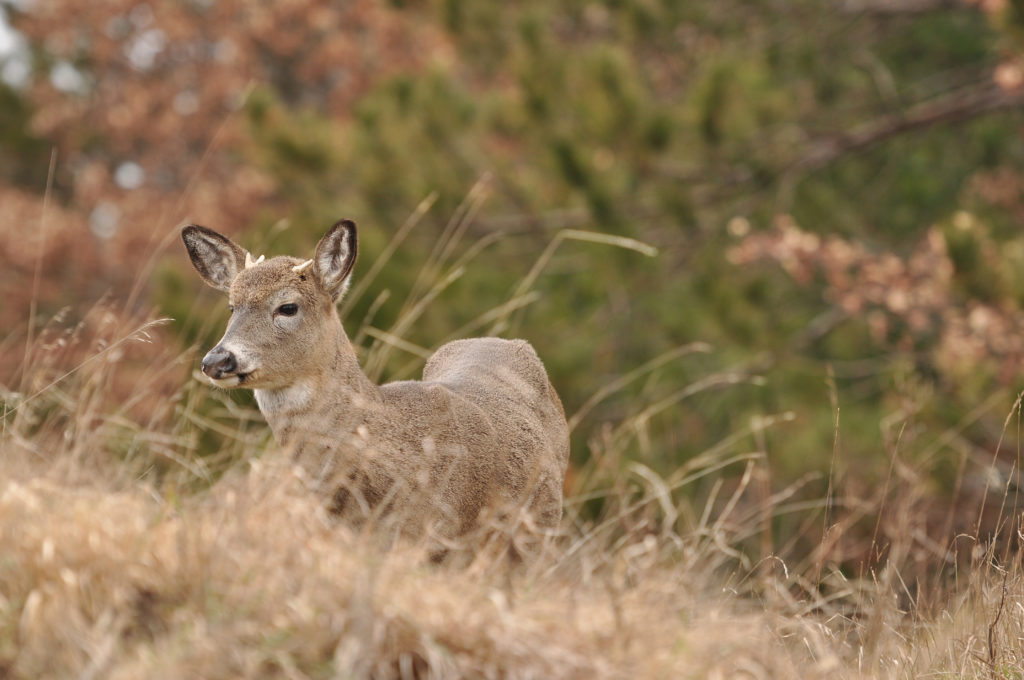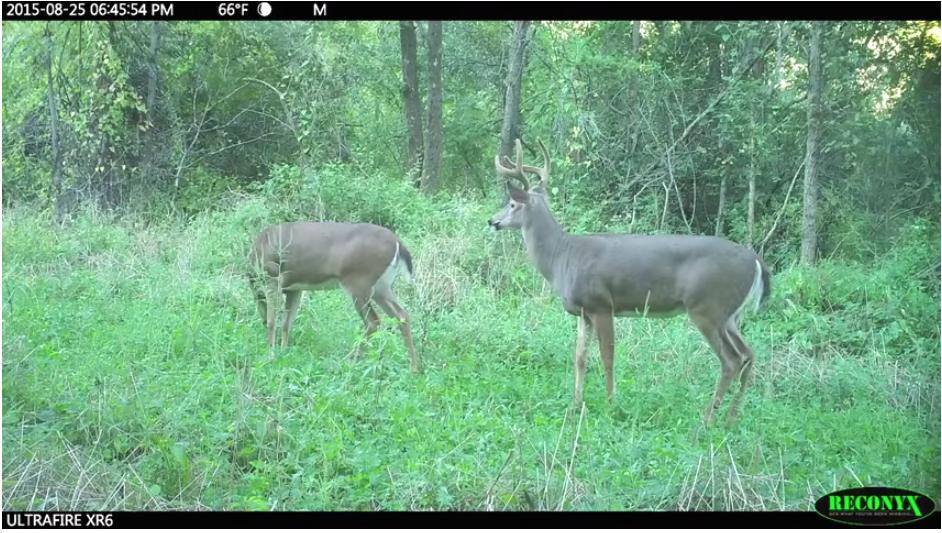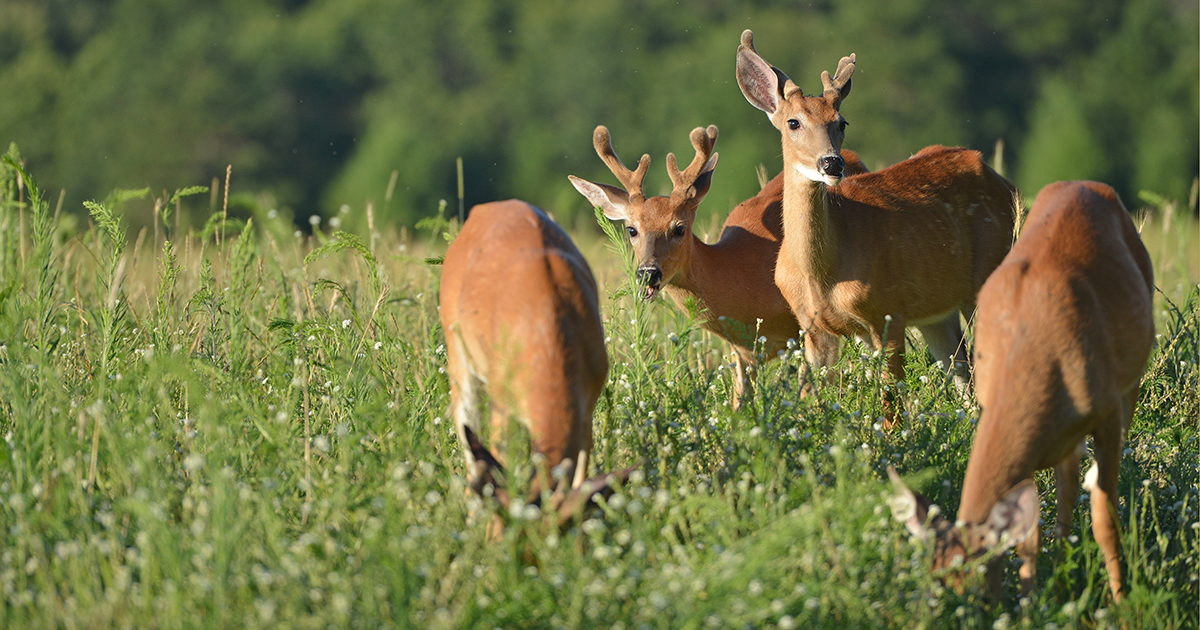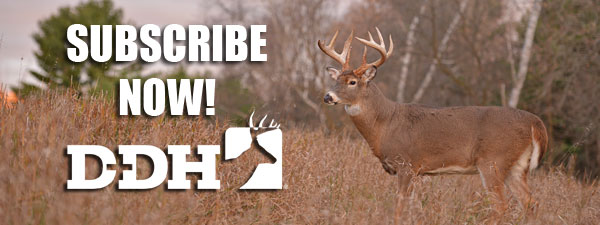Deer disperse when they move away from their birth range and establish a new adult home range. Although there are exceptions, most white-tailed does move relatively short distances from where they were born to where they live as adults. As a result, they tend to retain overlapping home ranges with related females.
Most bucks, on the other hand, establish adult home ranges separate from their birth range — sometimes traveling long distances to do so.
Penn State University researcher Eric Long and his colleagues point out that understanding animal dispersal is important for the study of gene flow, disease spread, population dynamics, spread of invasive species, and establishment of rare or endangered species. Unfortunately, they conceded that dispersal remains one of the least understood aspects of animal ecology, especially with white-tailed deer.
Why do young bucks disperse? When do they disperse? How far do they travel? What role do social and environmental factors play in dispersal behavior? Why do they finally settle where they do?
Answers to these and similar questions depend upon many poorly understood factors, and researchers are quick to admit they don’t have all of the answers. However, Long and his co-workers have determined the amount of forest cover is one very important factor influencing dispersal patterns in white-tailed bucks, whereas deer density has minimal influence.
The Study
The Pennsylvania researchers captured and tracked 286 young bucks in two study areas. One of the areas, located in the Allegheny Plateau region in western Pennsylvania, was highly fragmented by agricultural fields, with forest cover (5% of the landscape) occurring primarily in isolated woodlots. The second area, located in the Ridge and Valley region, had more interconnected forest cover (61%), mainly on ridges; the valleys were farmed.
Deer in this region were non-migratory, making it possible to capture many of them (with drop nets, rocket nets, livetraps, etc.) between late December and early April. A few were also captured when only a few weeks old. All were equipped with radio-transmitters and located one to three times each week until they were about 1 1/2 years old.
The investigators also reviewed the literature for studies reporting deer dispersal patterns over a range of habitat and deer densities. They limited their appraisal to non-migratory deer, because there have been few studies concerning dispersal among migratory deer (those that travel long distances between summer and winter range), which apparently disperse differently than non-migratory deer.
In all, they examined dispersal data for 12 non-migratory whitetail populations living in different environments and with different deer densities. They analyzed the data to determine if the dispersal rate or dispersal distance of young bucks was related to forest cover or prevailing herd density.
Why Do Bucks Disperse?
This study showed that most (50% to 80%) young bucks are inclined to disperse to establish new home ranges by the time they are 1 1/2 years old, regardless of deer population density or amount of forest cover.
Early studies suggested that breeding competition and aggression by older, more dominant bucks were the primary factors responsible for young buck dispersal. However, more recent information indicates this is not the case. Even in the absence of mature bucks, yearling bucks disperse.

To the contrary, domination by adult female relatives appears to provide one of the chief stimuli for young male dispersal. In fact, at least one study has shown that non-migratory orphaned males are more likely to remain on their natal range, whereas others tend to disperse in the presence of their mothers. However, other studies have produced contrasting results, and the influence of orphaning on migratory yearling bucks has not been investigated. Whatever the exact cause, one must conclude that most young bucks will leave their birth range and establish a new adult range, which serves as good protection against inbreeding.
When Do They Disperse?
In heavily forested cover, most bucks disperse just prior to the breeding season, when they are 16 to 17 months old. However, studies conducted on intensively farmed land (with minimal forest cover) in Illinois showed that 50% to 75% of the bucks left their birth range in spring (when they were 10 to 12 months old) about the time their mothers gave birth to fawns. In either case — spring dispersal or autumn dispersal — young bucks are likely to experience considerable aggression from their mothers.
HOW HUNTERS CAN KEEP YOUNG BUCKS FROM DISPERSING
Does with newborn fawns establish fawn-rearing territories from which they forcibly exclude all other deer — including their 1-year-old offspring. Likewise, does avoid associating with their sexually mature male offspring in autumn. In either case, the agonistic mother-son encounters are invariably won by the mother, which encourages the male to “move over or get out all together.”
Normally, 1-year-old bucks living in heavily forested cover can find available habitat adjacent to their natal range and spend the summer there. However, where forest cover is lacking, as in intensively farmed land, young bucks more likely must disperse during spring to distant isolated woodlots. In fact, in Illinois, spring dispersers on average traveled longer distances than fall dispersers (23.7 miles versus 11.6 miles, respectively.) These seasonal differences in dispersal distance suggest other social factors must also be involved.
It’s equally important to recognize, however, that some bucks might continue to revisit their birth range and delay establishing new permanent adult ranges until they are 2 or 2 1/2 years old. At least this has been shown to be the case on heavily forested Northern range, where deer typically migrate seasonally and bucks rarely disperse more than 6 miles.
So dispersal timing and distance tends to be influenced by the amount of forest cover available. Scant forest cover generally leads to earlier (spring) dispersal and greater dispersal distances.
How Far Do They Go?
The summary provided by Long and his associates shows the highly variable nature of dispersal distance for young non-migratory bucks. Average dispersal distances ranged from 1.9 miles to 23.6 miles, depending upon the amount of available forest cover. Typically, scant forest cover contributed to greater dispersal distance, sometimes exceeding 100 miles. Given the available data, it appears whitetails require at least 35%, and possibly as much as 50%, forest cover in order to minimize dispersal distance of young bucks.
For example, in South Dakota, Illinois and eastern Montana study areas, where forests covered less than 35% of the landscape, young bucks dispersed on average 17.3 miles, and one deer in Montana traveled 132 miles. By comparison, in other areas, where forests covered 50% to 70% of the landscape, young bucks dispersed an average of only 4.2 miles, with a maximum distance of 34.8 miles for one buck from Maryland.
Forest cover is definitely an important component of favorable deer habitat, as Long and his group emphasize.
“Although white-tailed deer are considered habitat generalists, forest cover is an important component of deer habitat, because forest stands provide thermal cover, escape shelter and food resources,” Long reported. “In less-forested landscapes, then, deer may need to travel farther to find suitable forested habitat patches. Interestingly, forest cover also influences other behavioral responses in this species, because white-tailed deer in less-forested landscapes have been shown to form larger social groups than those in more-forested habitats.”
Despite this forest cover-dispersal distance relationship — greater dispersal distance with scant forest cover — even some young bucks raised in dense forest cover might disperse 10 to 30 miles, and possibly more. Therefore, regardless of the vegetative circumstances or herd density, some bucks establish home ranges far from where they were born. Consequently, they are quite capable of spreading infectious diseases, such as bovine tuberculosis (TB) and chronic wasting disease (CWD), great distances. Also, if you manage your property for deer, the bucks born on your property will most likely be harvested by your neighbors, sometimes many miles away.
Why Do They Settle?
Researchers have a fairly good handle on determining why young bucks are so inclined to leave their birth range. They can even predict how far they are likely to travel with reasonable accuracy. However, it’s still unknown what causes the dispersing buck to settle in a specific area. Is the disperser looking for certain habitat features? Is he looking for vacant space? Is he looking for breeding opportunities? Or is he seeking a compatible association with other deer?
On the other hand, maybe all of these as well as other factors are involved.

Researchers generally agree that migrators exhibit somewhat different dispersal patterns than non-migrators. That is, migrators more often disperse in the direction of (familiar) winter range. This seems logical, given their prior experience traveling these routes.
It’s my guess that certain social factors as well as favorable space and habitat are involved in determining where the young buck settles. Aside from the doe rearing new fawns and the buck in rut, deer tend to seek compatible associates. Yearlings in particular, band together during summer, bucks seek fraternal group membership, and related females with their young form sizable groups during winter.
Whitetails are social animals, and it’s important that they have compatible associates during most of the year. However, it seems as though the young buck might at times have considerable difficulty in finding a social niche.
So why a young buck settles where he does could depend upon the season (spring or autumn), deer density and herd sex and age composition, as well as habitat characteristics in the new area.
Differential Dispersal
As young bucks disperse from an area they are normally replaced by roughly an equal number of dispersers from surrounding areas. However, emigration (outward movement) might not equal immigration (inward movement) where the habitat is highly fragmented and where limited forest cover occurs as localized “islands.”
According to University of Georgia professor Karl Miller, due largely to a dispersal imbalance, resultant herd sex-age structure of such a fragmented population may mimic that of a heavily male-harvested population — one with young age structure among males and sex ratios heavily skewed toward females.
USE WHITETAIL DISPERSAL TO YOUR ADVANTAGE
Christopher Rosenberry and his research colleagues at North Carolina State University also studied the effects of young buck dispersal on herd dynamics in Maryland’s Chesapeake Bay area. They concluded the following: “Within deer management units there may be two areas, an interior space and a ‘dispersal edge.’ The dispersal edge is where dispersal movements affect population demographics to the greatest extent (i.e., the area of greatest exchange of individuals). Dispersal movements would have the least effect on population demographics within the interior. Yearling males in the interior likely will have been born and matured in the management unit rather than elsewhere.”
Rosenberry’s observations apply equally well to the impact of buck dispersal on private land management efforts. Clearly, the size of the dispersal edge and interior are a function of dispersal distance and management area size and shape. If, for example, the mean dispersal distance is 3.7 miles (as in the Maryland study), which would define the dispersal edge, a circular management area would need to be greater than roughly 42.5 square miles to have any interior space. Hence, in smaller areas, many if not most of the mature bucks are probably immigrants.
Conclusions
Between 50% and 80% of young white-tailed bucks can be expected to leave their birth range and establish new adult ranges by the time they are 11/2 years old. Because maternal domination is the primary driving force for dispersal, some studies indicate heavy doe harvesting would reduce the dispersal rate of young bucks. However, these scientific studies indicate that overall herd density seems to have little or no effect on the rate or distance of dispersal.
Average dispersal distances for young bucks might range from less than 2 miles to more than 23 miles, depending upon the amount of forest cover available. Typically, scant forest cover (less than 35% or so) contributes to earlier (spring) dispersal and to greater dispersal distances (sometimes in excess of 100 miles). So if you hunt intensively farmed land, with forest cover limited in scattered woodlots, don’t expect to watch those buck fawns grow into mature bucks, unless you are one very mobile hunter that covers a vast area.
— John Ozoga worked as a wildlife research biologist for 30 years. Now retired, he has been D&DH’s research editor since 1994.
D+DH In-Depth is our premium, comprehensive corner on America’s No. 1 game animal. In this graduate-level course, we’ll teach you about deer biology, behavior, and ultimately, how to become a better hunter. Want to be the first to get our premium content? Become a D+DH Insider for FREE!


